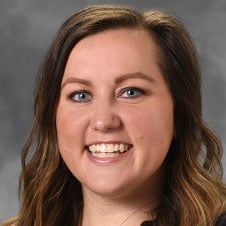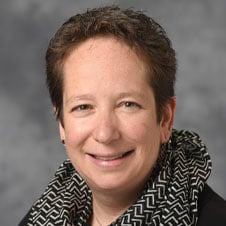“Telehealth is for everyone,” but patients without adequate access or digital health literacy are missing out on the benefits the technology offers, according to Alexandra Hunter, MPH, a virtual care consultant for the Henry Ford Health. That is especially true for older adults—those who are 65 and up—who have chronic health conditions.
“At Henry Ford Health, this is something that we’re heavily invested in, specifically in our older adult population,” Hunter said during a presentation at the Healthcare Information and Management Systems Society (HIMSS) Global Health Conference in Orlando, Florida.
“I would imagine everybody in this room knows somebody who has struggled,” Hunter told the HIMSS crowd. “Maybe it’s yourself remembering your username, your password or understanding how to navigate your patient portal—and it could be a grandparent, it could be a parent, it could be your spouse.”
Helping patients better manage and understand how to access their personal health information is part of achieving “digital equity,” which Hunter defined as “the idea that everyone should have the information technology capacity needed for full participation in society, democracy and the economy.”
Henry Ford Health is a member of the AMA Health System Program, which provides enterprise solutions to equip leadership, physicians and care teams with resources to help drive the future of medicine.
“Telehealth is here to stay,” Hunter declared. “But the telehealth space is not a ‘Field of Dreams’ in terms of ‘if we build it, they will come,’ because we have built things, but we still have many barriers that prevent people from being able to access them for a variety of different reasons.”
Supporting telehealth is an essential component of the AMA Recovery Plan for America’s Physicians.
Telehealth is critical to the future of health care, which is why the AMA continues to lead the charge to aggressively expand telehealth policy, research and resources to ensure physician practice sustainability and fair payment.
Among these resources is an AMA issue brief that outlines nine key steps to advance telehealth equity.
4 steps to get older adults connected
The telehealth focus on older adult patients at Henry Ford Health stems in part from the fact that they are the largest users of health care, and they are often managing one or more chronic conditions. Having a doctor who can reach them via a telephone or video visit can be “incredibly important and crucial” to adhering to a treatment plan, Hunter said.
“We know that if they don’t have the tools and skills, though, they likely cannot access this as an option,” she added.
Hunter identified four actions needed to achieve digital equity and described what Henry Ford Health is doing to help older adults benefit from the technology.
Identify potential disparities and access barriers. Certain patient populations, such as older adults, those with limited English proficiency and historically marginalized racial and ethnic groups, have been found to be low users of telehealth. Hunter encouraged conference attendees to specifically seek out these patients to learn what barriers they face. She also suggested finding patients who have scheduled more telephone visits than video visits and examine if this is preference or necessity.
Mitigate digital literacy and resource barriers. Henry Ford Health is developing a “peer-to-peer digital inclusion coaching” program for older adults. “This would be older adults teaching fellow older adults digital skills on how to get onto their patient portal and how to schedule a video visit,” Hunter said.
A survey is being conducted to get a digital literacy-skill baseline and to identify those interested in being a peer trainer. The health system is also identifying those with higher digital literacy skills who could “train the trainers.” And then, finally, Henry Ford Health will be finding those older adults with lower digital literacy who wish to improve their skills.
Remove health system-created barriers. Video visits should be offered to every patient for whom they are appropriate, Hunter said. She suggested working with schedulers and physicians to see if they are under the impression that certain patients are not good candidates for virtual visits and find ways to accommodate them.
This could include finding them affordable access to devices, broadband or interpreters. “We have a large Middle Eastern population in the Detroit area,” Hunter said. “It's incredibly crucial that we are making sure that our resources are translated into languages that these individuals can understand.”
Advocate change to support sustained and equitable access. Hunter urged audience members to advocate for expansion of low-cost broadband and funding for telehealth expansion in low-resourced health centers.
“That’s incredibly important because if people do not have access to broadband or if [physicians] are not able to be reimbursed for their telehealth services, then having a device isn’t really going to make sense if they can’t access it at their home,” she said.
“In the ideation phase, when we’re thinking about building things, are we considering these populations at the beginning or are we considering these populations at the end?” Hunter asked. “I want to encourage individuals to be thinking about these populations at the beginning.”
Learn about the In Full Health Learning and Action Community to Advance Equitable Health Innovation, an initiative to improve health outcomes for all patients by committing to equitable health innovation opportunities that benefit historically marginalized communities.
Creating external clinical sites
In a separate HIMSS session, Marie Lee, MEd, director of virtual care at Henry Ford Health, discussed the system’s use of telehealth in clinical settings for patients requiring a higher level of care, such as needing an infusion or preparing for a kidney transplant or some other “very high-stakes medical procedure.”
The service began prepandemic with the integration of behavioral health offered remotely at primary care offices.
“We needed to be crystal clear with the patient that you will see this person over video,” Lee said. “This was a shock to some of our patients.”
Some would ask, “What do you mean I’m not going to see the person?” The standard response is the patient will see health professional, “it’s just over a screen,” Lee noted.
For some telehealth services, others came to the system requesting assistance. This included the Michigan Department of Corrections seeking help with remote oncology services.
Instead of taking incarcerated patients for infusions at Henry Ford Health, the medication was transported so that infusion could be done remotely by Department of Corrections nurses and overseen by Henry Ford Health staff via telehealth. Follow-up care was also provided virtually.
Other external clinical sites connected via telehealth include workplaces and schools.
“At the beginning of the school year, parents sign a consent form that their students can be treated in the school clinic should they become ill,” Lee explained.
Other nuances to these services include a change of vocabulary. At these external sites, Lee said nurses see patients at their “chair-side” and physicians learn how to develop a healing “web-side manner.”





